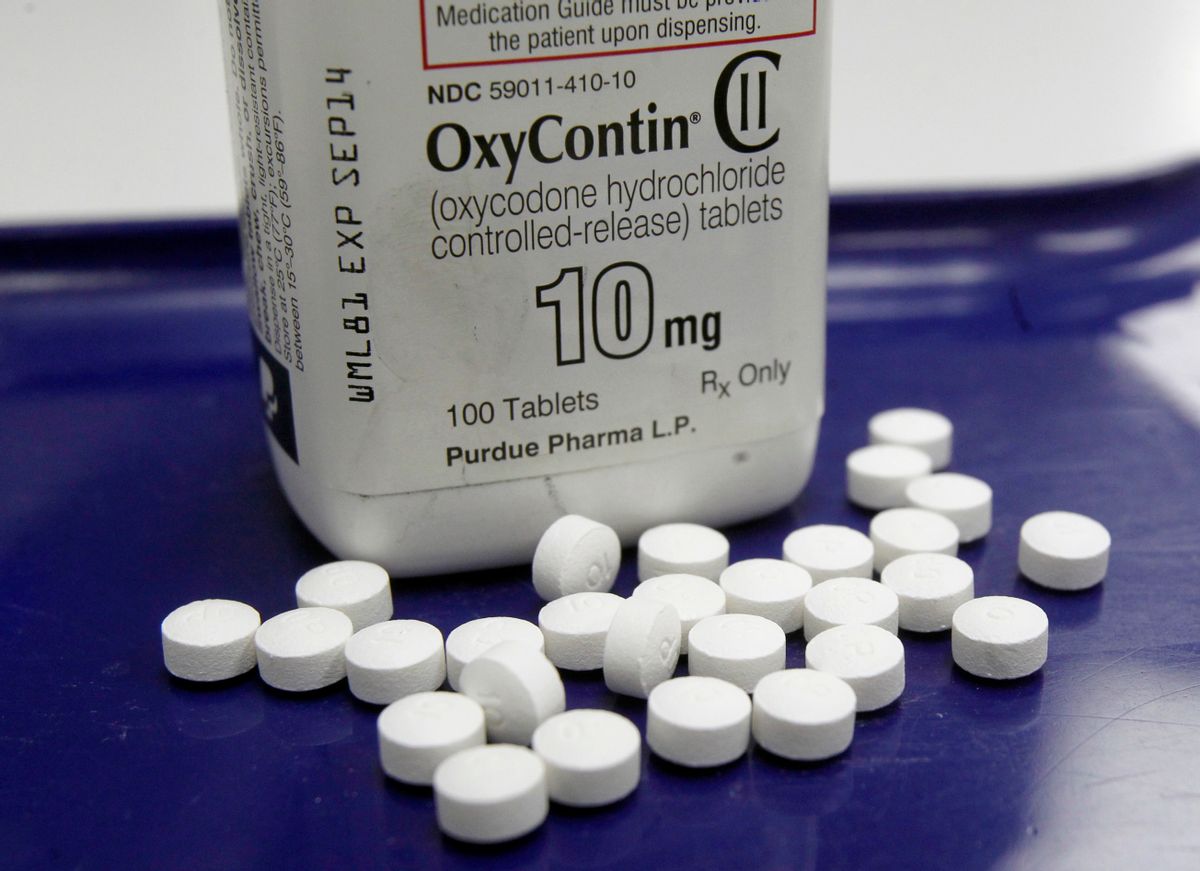Editor’s note: The following is a roundup of archival stories related to opioids.
The opioid crisis appears to be getting worse, not better.
According to The New York Times, drug deaths are rising faster than ever, with more than 59,000 overdose deaths in 2016.
The situation has been dire for a few years, with six in 10 drug overdose deaths in 2014 involving an opioid, such as a painkiller or heroin.
In May, Donald Trump appointed a commission on the opioid epidemic, which he’s described as “a tremendous problem.” However, his proposed budget includes cuts to agencies like the Office of National Drug Control Policy and the Substance Abuse and Mental Health Services Administration.
At The Conversation, scholars have been examining the many facets of the epidemic for months. Here are six articles that explain the background of the epidemic and where were might go from here.
How did we get here?
Ted Cicero and Matthew Ellis, who study opioid abuse at Washington University in St. Louis, argue that the epidemic is rooted in two events: the introduction in 1996 of OxyContin, an extended-release high-dose opioid, and a 2001 report on pain treatment from the Joint Commission on Accreditation of Healthcare Organizations.
As Cicero and Ellis write:
“The change in pain treatment ushered in by the Joint Commission report lead to an increase in the number of opioid prescriptions in the U.S., and the increase in prescriptions for this particular high dose opioid helped to introduce an unprecedented amount of prescription drugs into the marketplace, generating a whole new population of opioid users.”
Jeannie D. DiClementi, a professor of psychology, points out that the increase in opioid prescriptions led to an increase in heroin use:
“[N]early 80 percent of heroin users report having become addicted to prescription pain medications first, while just 3.6 percent had a history of heroin use before beginning prescription pain medications.”
Fentanyl, a synthetic opioid 100 times more powerful than heroin, was first introduced in the 1960s as a painkiller during major surgery. Illictly made fentanyl is now found on the street, often in counterfeit drugs. So are novel synthetic opioids that are chemically unrelated to anything used in medicine but act on the same receptors in the body and brain. These drugs are generally manufactured in clandestine labs in China and Mexico.
However, adding these illicitly made versions of fentanyl and other new opioids to Schedule I — the category of the Controlled Substances Act for illegal drugs like heroin — can be a lengthy process. And as Samuel Banister, Roy Gerona and Axel Adams, who study these new synthetic substances, explain:
“The trouble is that as individual illicit synthetic opioids are added to Schedule I, clandestine chemists in China and Mexico ‘tweak’ molecular structures to circumvent the law by creating new drugs with similar effects.”
Treating addiction
Last year, the federal government passed legislation aimed at expanding access to addiction treatment and took steps to improve treatment options for people in the criminal justice system.
William Greene and Lisa J. Merlo from the University of Florida wrote that:
“This stepped-up policy response is giving doctors the means to better treat people with opioid addiction. When combined with improvements in public understanding that addiction is a disease requiring treatment, we as a society are creating an environment that supports treatment. We believe this will save many thousands of lives.”
We still need opioids
Pain, explains Robert Caudle at the University of Florida, is complex and multifaceted, something that we can experience in many dimensions. Opioids can suppress incoming pain signals, prevent those signals from being amplified and improve the emotional states of the patient, all critical things for people with chronic pain.
In many ways, opioids are the most effective treatment we have currently, but Caudle notes out that we aren’t investing much in finding better ones:
“In 2015 the National Institutes of Health spent US$854 million on pain research, compared to more than $6 billion for cancer. It is no wonder that pain patients muddle through with what amounts to centuries-old therapies.”
While the opioid epidemic wears on in the U.S., parts of South America, Africa and Asia face a very different opioid crisis: too few of them. People in those parts of the world often cannot access pain medication stronger than acetaminophen.
Luke Messac argues that policies from the International Narcotics Control Board aimed at preventing opioids from being diverted for illict use have wound up keeping these medicines out of the hands of people who truly need them. “Pain is universal,” writes Messac, “but its relief is still a function of geography.”
![]() This is an updated version of a story that originally ran on October 6, 2016.
This is an updated version of a story that originally ran on October 6, 2016.
Aviva Rutkin, Big Data and Applied Mathematics Editor, The Conversation and Jessie Schanzle, Desk Editor, Health and Medicine, The Conversation



Shares